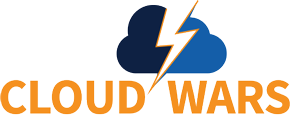Stream this Cloud Wars Live podcast episode for my conversation about business, data and more with BMC President and CEO Ayman Sayed.
Search Results: customer success (1571)
The Digital Acceleration Imperative, Community Transformation Tips, Future-Proofing Receivables with Digital Transformation
Feb 11 Intro to Power BI by Microsoft StoreSee –> Link to RegisterSee –> Link to Course CatalogMicrosoft Power BI L100*This is an introductory course within Microsoft Business Applications.Prerequisites: Familiaritywith Excel and access to the Power BI Service.Power BI lets you easily unify data from many sources to createinteractive, immersive dashboards and reports that provide actionableinsights and drive business results. This course will provide anoverview Power BI and how its services and applications work together.Objectives:• Understand the building blocks of Power BI• Explore how Power BI can enable confident decisions usinganalytics• Collaborate with Power BI in Microsoft Teams• Connect to a Power BI dataset and begin visualizing data• Save a report within the Power BI service
Feb 11 Intro to Power BI * See — Link to Register * See — Link to Course Catalog Microsoft Power BI L100 *This is an introductory course within Microsoft Business Applications. Prerequisites: Familiarity with Excel and access to Power BI Service. Power BI lets you easily unify data from many sources to createinteractive, immersive dashboards and reports that provide actionableinsights and drive business results. This course will provide anoverview Power BI and how its services and applications work together. Objectives:• Understand the building blocks of Power BI• Explore how Power BI can enable confident decisions usinganalytics• Collaborate with Power BI in Microsoft Teams• Connect to a Power BI dataset and begin visualizing data• Save a report within the Power BI service
Learn why Bond Consulting Services is a national Top 200 consulting firm that empowers organizations across the US to thrive in a digitally transformed world
Oracle has one of the most compelling cloud stories of 2021 – let’s look at 10 predictions CEO Safra Catz made about its cloud businesses.
Gain powerful capabilities with the new release of Dynamics 365 Marketing to align your sales and marketing, make smarter decisions, and grow with an adaptable shared platform.
Adobe and Microsoft recently announced the creation of C3 AI CRM software with the help of Microsoft Dynamics 365. This innovative AI-first CRM software is built for all types of industries while making it easy to integrate with Adobe Experience Cloud. All of this improves customer-facing business operations with predictive insights.
Workday is the only 2-CEO vendor among cloud leaders —and co-founder and co-CEO Aneel Bhusri is thrilled with his new working arrangement.
What this post accelerates: Understanding how SAP is evolving their strategy around “Industry Cloud” and the potential application of their vertical market specific solutions to your business. From the author: As SAP turns 49 years old, it will need to sweep aside all of that midlife-crisis drama and fully regain the confidence of its customers as the unquestioned innovation powerhouse that can propel those businesses ambitiously and successfully into the global digital economy.
Success & the Admin! By Holly T. Kutil 01/19/19Many titles are given to the role of ERP Administrator, such as the IT…
Whether you’re an experienced marketer or just starting out in your career, you’ve heard about the importance of running successful campaigns, but what does that really mean? Sending an email? Running a webinar? Attending a tradeshow? Planning and executing all of these individual tactics can be good, but it’s not nearly as effective as a foundation of activities all working towards a common goal in one holistic marketing campaign. Join Haley Martin, Director of Marketing for AvidXchange, on Wednesday, January 9th at 2:00pm ET as she discusses the ins and outs of building a remarkable campaign.
In this interactive 60 minute webinar, Haley will cover the following topics:
• Today’s definition of a marketing campaign
• Examples of some of the best B2B campaigns
• A step-by-step guide to create a campaign
• How to measure campaign performance
Bio
Haley Martin is a highly ambitious and performance-driven B2B marketing professional with an unapparelled work ethic. She takes pride in providing the best demand generation campaigns possible, while managing a team of A+ players. As the Director of Marketing for AvidXchange, her goals include generating demand for all areas of the business including new business, partner sales, and existing customers.
She attended the University of South Florida where she graduated magna cum laude with a B.S. in Business Marketing and went on to receive her MBA from Gardner-Webb University with an emphasis in Marketing. #ChannelMarketingAllianceWebinar#Marketing
It’s important to attract and keep the right candidates to power your business to success. As an employer, you should be asking “what’s my biggest issue, and who can help me address that issue?” I recommend having a conversation with your employees and colleagues to identify which components of the Employee Experience might help you stay competitive, and where you might be lacking.
Importing Excel files into D365 F&O
As the pace of business accelerates, organizations have to drive efforts to keep up with the times. For businesses using…
By Alan Wyne, Aug 27, 2020If you have been in the Microsoft Dynamics community long, then you no doubt have…
Learn about tools that can assist in data management in an ERP implementation project.
Presented by: @Geoff Ables
CRM can deliver faster sales cycles, higher win rates, more loyal customers and accelerated marketing. But more than 60% of the time, CRM fails to deliver on those promises.
If you’re struggling with CRM adoption, then this is the session that you can’t afford to miss.
Learn why some CRM projects fail – and how to successfully recover. Better yet, understand how to set yourself up for success from the start!
#Intermediate
#CustomerEngagement
#Functional
#Sales
On this Cloud Wars Live podcast and as part of the CEO Cloud Outlook 2021 series, I speak with Microsoft Executive VP Scott Guthrie.
This blog defines and compares the three most commonly used inventory control policies. It should be helpful both to those new to the field and also to experienced people contemplating a possible change in their company’s policy. The blog also considers how demand forecasting supports inventory management, choice of which policy to use, and calculation of the inputs that drive these policies.





















